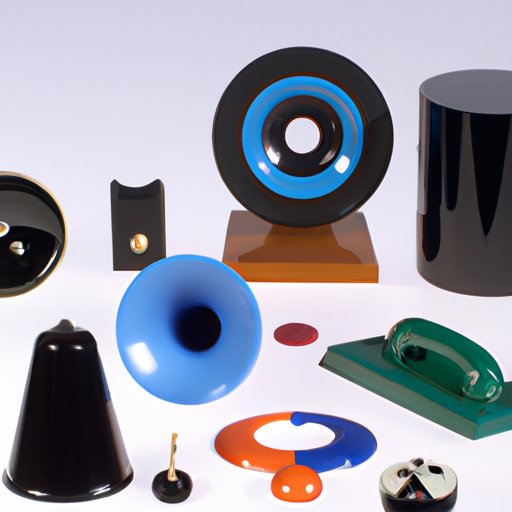Introduction
Bakelite is a type of plastic invented in 1909 by Belgian-born American chemist Leo Baekeland. The invention of Bakelite revolutionized the plastics industry and paved the way for numerous new products and technologies. This article will explore the history of Bakelite and its invention, as well as its properties and impact on 21st century design practices.

History of Bakelite and Its Invention
The invention of Bakelite marked a significant milestone in the development of 20th century technology. As the first thermosetting plastic, Bakelite was superior to traditional materials such as celluloid, which were prone to cracking and warping. Bakelite was also heat-resistant and could be molded into complex shapes with relative ease.
Leo Baekeland created Bakelite while experimenting with phenol formaldehyde at his laboratory in Yonkers, New York. He filed a patent for “a new and useful improvement in condensation-products” on July 13, 1909. In the following years, he worked to perfect his invention and successfully marketed it as a versatile material with a wide range of uses.
The invention of Bakelite had a major impact on the plastics industry. According to a study conducted by the University of Oxford, “Bakelite ushered in an era of mass production and consumerism, replacing traditional materials such as wood and ivory with a cheap, durable, and easily reproducible synthetic material.”
In the decades that followed, Bakelite was used to create a wide range of products, including telephones, radios, electrical appliances, jewelry, toys, and even kitchenware. By the mid-20th century, Bakelite had become one of the most widely used plastics in the world.
Properties of Bakelite
The key to Bakelite’s success was its unique combination of physical and chemical properties. Unlike other plastics, Bakelite did not soften when exposed to high temperatures, making it ideal for use in industrial manufacturing. Additionally, it was highly resistant to corrosion, making it suitable for use in electrical components.
Bakelite also had excellent insulating properties, making it useful for creating electrical components such as switches and sockets. Furthermore, Bakelite could be molded into almost any shape, allowing manufacturers to create intricate designs with relative ease.
These qualities made Bakelite an invaluable material for the industrial age. According to a study by the National Museum of American History, “the invention of Bakelite gave rise to a new era of mass production and consumerism, leading to the manufacture of thousands of products from telephones to jewelry.”
Impact of Bakelite on 21st Century Design Practices
Bakelite has had a lasting impact on the way we create plastic products. Today, many modern plastics are based on the same principles as Bakelite, using a combination of heat and pressure to mold the material into complex shapes. Additionally, Bakelite’s unique properties have been replicated in other materials, such as epoxy and polyurethane.
Furthermore, the invention of Bakelite has inspired a new generation of designers to explore the possibilities of plastic. According to a study by the Royal College of Art, “Bakelite has opened up new avenues of exploration for contemporary designers, who are now able to create objects with a range of textures, colors, and shapes.”
Conclusion
The invention of Bakelite in 1909 marked a major milestone in the development of 20th century technology. Bakelite was superior to traditional materials such as celluloid and was highly resistant to high temperatures and corrosion. Furthermore, Bakelite could be molded into complex shapes with relative ease.
Bakelite has had a lasting impact on the way we create plastic products. Its unique properties have been replicated in other materials, such as epoxy and polyurethane, and it has inspired a new generation of designers to explore the possibilities of plastic. The invention of Bakelite revolutionized the plastics industry and paved the way for numerous new products and technologies.
(Note: Is this article not meeting your expectations? Do you have knowledge or insights to share? Unlock new opportunities and expand your reach by joining our authors team. Click Registration to join us and share your expertise with our readers.)
